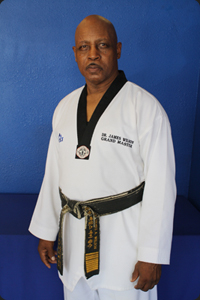



In Korean,TAE means "to strike or break with foot"; KWON means "to strike or break with fist"; and DO means "way", "method", or "path". Thus, taekwondo may be loosely translated as "the way of the hand and the foot."
Hapkido (also spelled hap ki do or hapki-do) is a dynamic and also eclectic Korean martial art. It is a form of self-defense that employs joint locks, techniques of other martial arts, as well as kicks, punches, and other striking attacks. There is also the use of traditional weapons, including a sword, rope, jool bong (nunchaku), cane, short stick (dan bong), and staff (bong, gun, b!) which vary in emphasis depending on the particular tradition examined.
Hapkido may be generally defined as "the way of the circle."
Hapkido contains both long and close range fighting techniques, utilizing jumping kicks and percussive hand strikes at longer ranges and pressure point strikes, joint locks, or throws at closer fighting distances. Hapkido emphasizes circular motion, non-resisting movements, and control of the opponent. Practitioners seek to gain advantage through footwork and body positioning to incorporate the use of leverage, avoiding the use of strength against strength.

Southwestern Association of Martial Arts,
College of Health and Fitness
A Tribute to the Late Supreme Grandmaster
James A Wilson